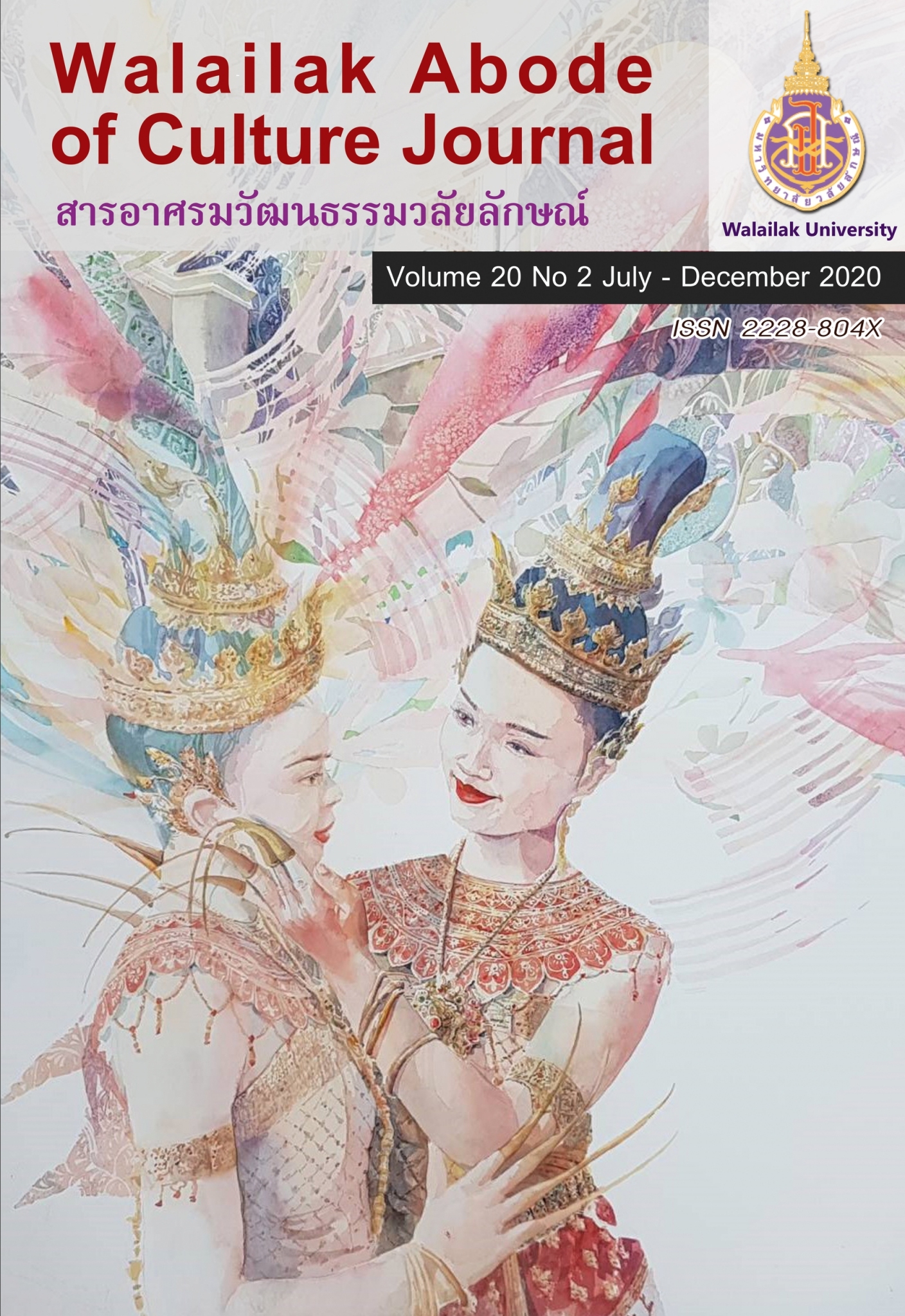The creation melodies of Ranad Thum: “levels 3 of Ta Yae song”
Main Article Content
Abstract
The creation melodies of Ranad Thum: “levels 3 of Ta Yae song” is researched for the purpose of creating melodies of Ranad Thum: “levels 3 of Ta Yae song which has 3 language. Include The 1st language is melodies of Mon song 2nd language is melodies of Chinese song and 3rd language is melodies of Indian song. By using qualitative research methods to use for defining the scope and the process for creating works, Present the result of creation in the form of a song by using Ranad Thum to be the main melody and discuss the new created melodies with the method of descriptive analysis. It can be summarized the creative result according to the objectives:
1) Melodies of Mon song: There are insertions melodies of Mon song in appearance frequent and control the sparse of melodies. Including to appear special tactics in different such as flicking the wrist, hitting the press and muting voice and the melody is not in the rhythm of the song. Besides, the author sets Klong Song Na to play levels 3 of Prob Kai rhythm.
2) Melodies of Chinese song: There are insertions melodies of Chinese song in appearance frequent and control the sparse of melodies and There is also a movement of the melody up and down repeatedly. In appearance of frequency and controlling the sparse of melodies. Include to appear special tactics in different such as flick the wrist, hit press and mute voice and the melody is not in the rhythm of the song. In addition, the author set Klong Tok, Phang and Taew to play levels 2 of Chinese rhythm to control Chinese melodies.
3) Melodies of Indian song: There are insertions melodies of Indian song in appearance frequent and control the sparse of melodies. There are insertions melodies of Indian song in appearance frequent and control the sparse of melodies. Including for appearing the special tactics in different such as flick the wrist, hit press and mute voice, the melody is not in the rhythm of the song and make sound by play be hide the rhythm, The author set Klong Song Na to play levels 3 of Prob Kai rhythm to control Ranad Thum melodies, set Klong Khak and Ramana Lamtad to control Indian melodies.
Article Details
© 2018 by Asian Journal of Arts and Culture, Walailak University. All rights reserved.
References
Chaiseree, P. (2013). Karnprapan Pleng Thai. Bangkok, Thailand: Chulalongkorn University.
Kawphachone, Ch. (2018). The Creation of Thap Wila Roengsamran “The Feline Suite”. (Doctoral dissertation, Chulalongkorn University, Thailand).
Meepom, D. (2013). The Inheritance of Ranad Thum Solo Piece of Master Phum Bapuyawat. (Doctoral dissertation, Mahidol University, Thailand).
Pidokrajt, N. (2020). Theories for research and The essence of music. Lopburi, Thailand: Narttaduriyang.
Tangcharoen, W. (2009). Aesthetics for Life. Bangkok, Thailand: Santisirikarnpim.
Tramote, B. (2002). Kham Bunyai Rai Wicha Duriyangkasart. Bangkok, Thailand: Chuan Pim.

